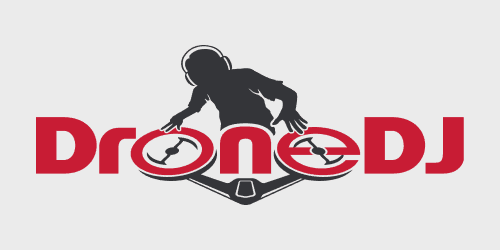
Drones are set to fly new missions over Pacific atolls, aiming to replicate their coup in the Galápagos archipelago earlier this year by eradicating invasive rats endangering the survival of indigenous wildlife. Topping that list of creatures the flights seek to protect are majestic green sea turtles, whose nests are raided by the voracious rodents.
Project seeks to relocate Galápagos drone success eradicating invasive rats to Polynesian atolls
The drone-driven operation is slated to begin next month, headed by environmental group Island Conservation. The organization was responsible for the two-year drone campaign to eradicate rats on Galápagos islands Seymour Norte and Mosquera that had ravaged unhatched and young native birds – vastly reducing the overall population over time. The project relied on uncrewed aerial vehicles (UAV) to drop rodenticide pellets in strategic areas. The effort was declared a success last month when surveys determined the islands 100% free of rats – a coup on its own, and one that boosted the looming attempt to replicate it on atolls near Tahiti.
First to receive the aerial bait drops is Tetiaroa, a stunning islet 30 miles north of Tahiti, and known for the luxury resort built by late actor Marlon Brando. The abundance of rats is visibly obvious in their uninhibited movement, as well as from signs of their destructive shredding habits. More troubling, however, were recent studies indicating the rodent’s raids of nesting areas as a main cause of dropping green sea turtle populations and native bird counts. Researchers wrote, their nighttime observation video shows that “when hatchlings appear close to the surface, the rat bites it in the head and pulls the hatchling out of the nest (which) strongly supports that invasive rats deliberately exploit sea turtle nests as a food source… (That) underlines the importance of the control of invasive rats in the management of turtle nesting sites.”
2012 de-ratification effort failed, but tech – and drones – now offer capabilities unavailable before
If the Galápagos example is any guide, transplantation of that eradication effort will be truly bad news for Tetiaroa rats – but a critical respite for sea turtles and other indigenous wildlife under threat.
As on Seymour Norte and Mosquera, Island Conservation will partner with New Zealand drone service company Envico Technologies, which flew its hexacopters to drop poison pellets manufactured to attract rats exclusively (sparing other, disinterested critters). This time around, as an added precaution, the operation will take place when migratory birds have left the sites.
Once the Tetiaroa drop has been completed, the operation will move to the rat-infested Gambier Archipelago at the other end of French Polynesia to perform the same task. Island Conservation will repeat the entire process at least one more time, scattering a total 30 tons of the tailor-made rodenticide, then stand back to see if the drones have again succeeded in eradicating the invasive rats.
Despite the remarkable success of the technique in the Galápagos, however, victory is not a given.
A 2012 effort to de-ratify Tetiaroa failed.That effort relied on manual poison distribution, while others have used less efficient and costly helicopter drops. Labor, time, and expense factors in those methods rendered them insufficient to eliminate 100% of rats present. Experts say a single pregnant female surviving such purges will succeed in over-populating an area of 2.47 acres within two years, which is exactly what transpired in 2012.
But tech – and UAV power – have come a long way since that time.
Back then Island Conservation deployed 35 people to manually spread pellets over 474 acres of Tetiaroa – taking four long months for surviving rats to repopulate. This time a group of just six members will pilot drones across an area five times that large – three islands total – in just two weeks.
Meanwhile, the Envico Technologies UAV that successfully dropped their 12 kg payloads over Galápagos sites have been upgraded to tote 50 kg of pellets, and will also debut gas-powered engines enabling an hour of flight time. Previous terrain surveys will allow those drones to fly autonomously, while also avoiding the more complex cliff and coastal features of the Polynesian sites.
It all combines to promise the upcoming effort will be faster, cost effective, and – lovers of green sea turtles hope – more likely to repeat Island Conservation’s drone success eradicating invasive rats on Seymour Norte and Mosquera.
“We’ve been watching drone technology for a number of years with the idea that it can dramatically reduce cost and also democratise island restoration by allowing local experts to be able to fly them using precision automating processes,” David Will, Island Conservation’s innovation program manager, told UK Wired in an excellent story.
Drones and native wildlife vs. invasive rats: something’s gotta give
Despite the brutal consequences the operation will have for rats in paradise, people sympathizing with the targeted critters have stakes of their own in the eradication objective succeeding. Islands make up a mere 5% of Earth’s land mass, but play home to 20% of all plant, bird, and reptile species – and suffer a whopping 75% of all extinction rates.
A leading reason remains the same.
Rats that arrived aboard human ships raid nests, hunt various wildlife and sea creatures, eat or otherwise decimate certain foliage, and upset delicate island ecosystems. Increased rat populations result over time in lower indigenous species levels, and thus fewer birds to carry seeds from surrounding islands that are often the basis for new growth of ravaged vegetation.
For infested islands to survive, something’s got to give – the obvious solution being drones effectively achieving the eradication of invasive rats.
FTC: We use income earning auto affiliate links. More.




Comments